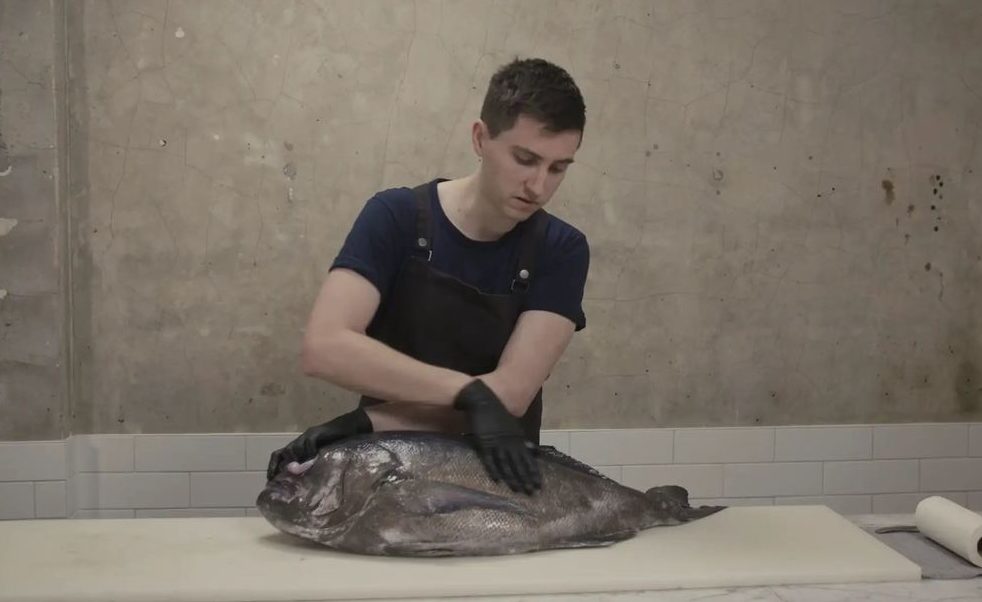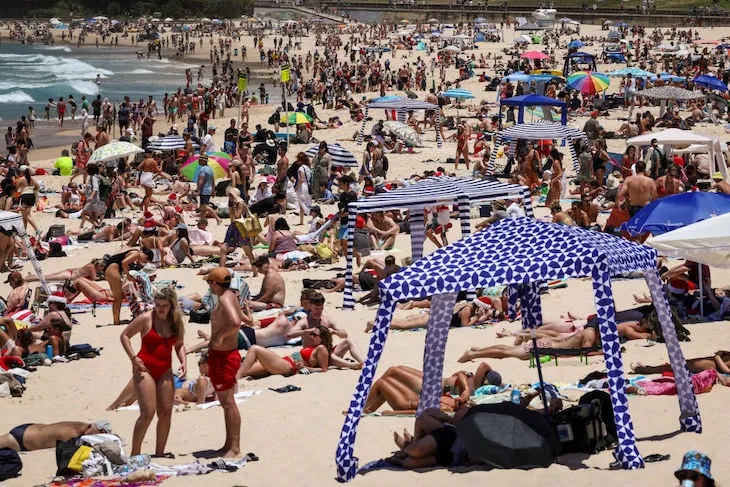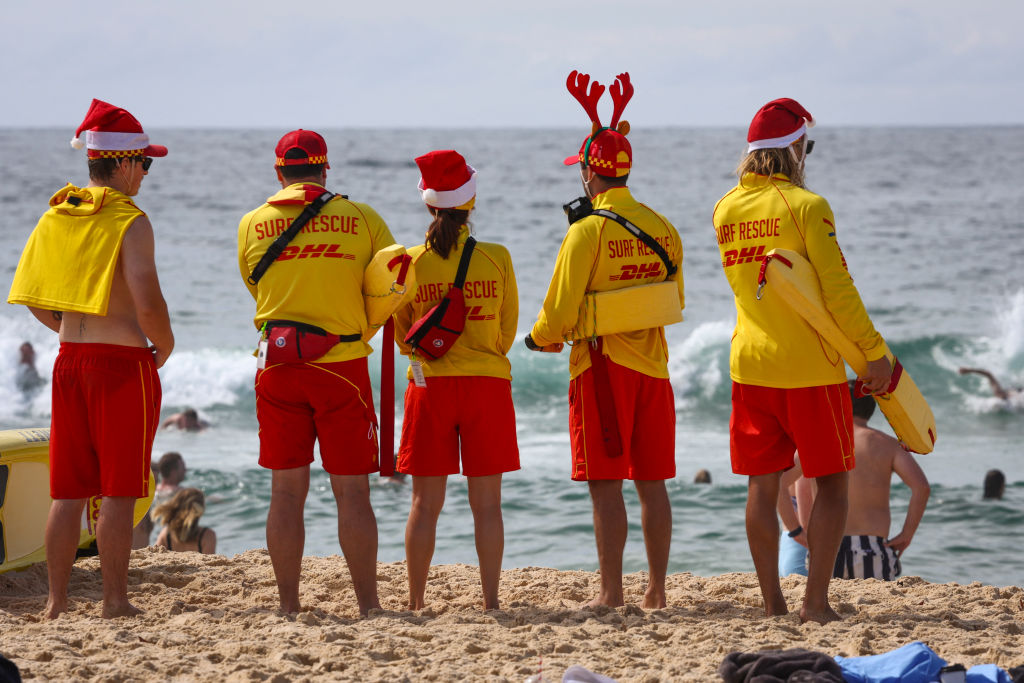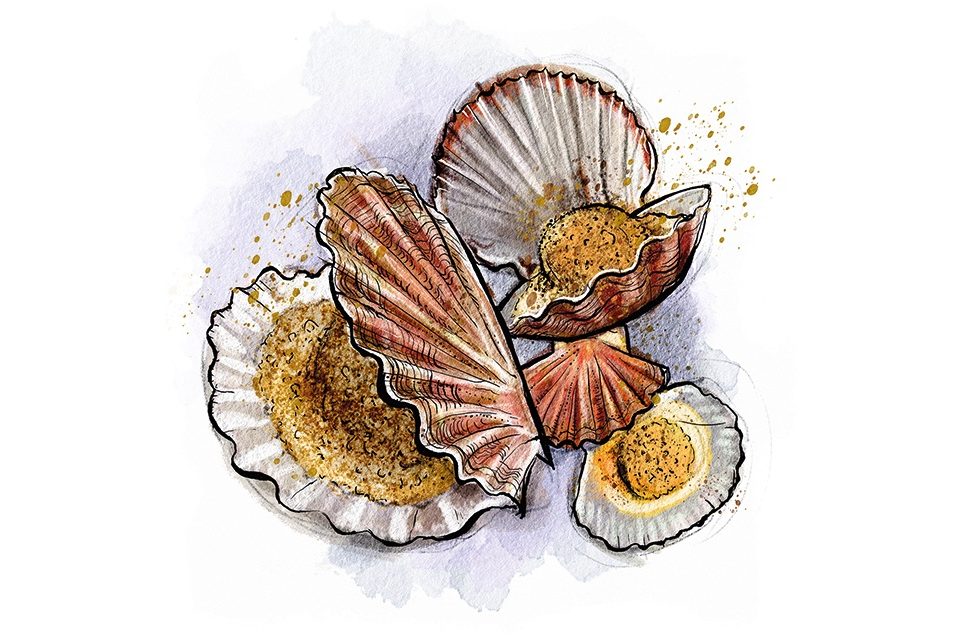‘Seacuterie’ is a crime of a word. It looks OK in writing, if you don’t think about it too much, or if you’re the kind of person who approaches words like a scientist observing a new strain of bacillus. A linguistics student would point out that seacuterie is a portmanteau word, in which segments of multiple words are cut loose from their motherships and roped together into rafts of new meaning, producing such fantabulous and indispensable neologisms as ‘sheeple’ and ‘frenemies’. ‘Seacuterie,’ he’d tell you, is a portmanteau of ‘sea’ and ‘charcuterie.’
That’s all very well, but portmanteau or no portmanteau, ‘seacuterie’ sounds silly when you say it aloud. I only realized this when a family member inquired what I was writing about. I tried to answer ‘seacuterie’, but only got as far as the initial ‘sea’, at which point I realized its inherent cringeworthiness and changed it to ‘seafood’. ‘Hmm, a very broad topic’, my relative mused. ‘Yes,’ I said, ‘should be quite interesting…did you hear it’s supposed to rain tomorrow?’
The next time it came up, I took the opening syllable at speed in the hope that momentum would break through my instinctive resistance to the ‘cuterie’. It didn’t quite work; I got out the initial ‘sea’, but then somehow the engine cut out — so I stammered into ‘seafood charcuterie’. Cowardly, I know, but I couldn’t help myself.
I’ve since figured out how it’s done. It’s all about mental visualization. You imagine someone else saying the dreaded word, some elegant raw-silkclad creature with perfect fingernails and a deliberately crooked smile cooing to the waiter, ‘The sssseacutairie board, please, Julian’. Then you simply imitate her.
But seacuterie is, once you get past the name, a kingdom unto itself, a world of curing and smoking, of drying and aging, of pickling and fermenting. Call for a seacuterie platter and, depending on your location, you’ll get anything from salmon pastrami to kingfish liver pâté to seal loin bresaola to cold-smoked arctic char to swordfish bacon.
Classics like salmon terrine, gravlax and smoked trout rub shoulders with octopus soppressata, tuna ’nduja and moonfish prosciutto. Although cured and fermented seafood recipes like salt cod and pickled herring have been around forever, what’s new is chefs applying traditional charcuterie methods to fish in the hope of moving beyond a purely fillet-based menu.
One of the leading lights of this movement — although as far as I’m aware, he avoids the seacuterie word — is the youthful Aussie chef Josh Niland, whose Whole Fish Cookbook was recently released to international acclaim. Niland is a firm nose-to-tailist when it comes to fish, finding ways to use almost every part (except the gallbladder, a tough sell since it apparently tastes like battery acid). The bones are used for broth and sometimes served up in pink sections of bone marrow. And yes, if you’re wondering, he serves the eyes, too, although mercifully not in their globular form: they’re broken down and blended with flour, then deep fried to produce something akin to a golden, crunchy potato chip. As Ariel might have sung: those are pearls that were its eyes; nothing of the fish doth fade, but only suffers a sea-change into something rich and strange.
Seacuterie is certainly rich and strange, and in some cases surprisingly beautiful. A slice of Niland’s octopus and parsley terrine looks as if it were lifted from an early Byzantine mosaic. Touches of red and green adorn his pale pressed coral trout head, liver and stomach, and the translucent lamellae of white ham he makes from the balance of the coral trout are delicate and otherworldly.
There’s something indefinably spiritual about it, too. Fish fillets can be devoured by the merely hungry; these carefully prepared little jewels of food instead seem geared towards the deeper malnourishment — perhaps aesthetic, perhaps spiritual — whose pangs can occasionally be felt somewhere near the nexus of soul and body. A seacuterie platter photographed at one of the three Michelin-starred restaurants in the luxurious Four Seasons Hotel George V in Paris expresses this precise mood. Like a skull in an Old Master painting, a giant fish spine lies across the board — a memento mori, incongruously bleak in this decadent setting — with a few austere, doubtless exquisitely delicious, slices of cured seafood laid upon its ribs. It would be macabre if it didn’t, like the still lifes of Chardin, so perfectly capture the tension between physical mortality and the longing for transcendence.
Perhaps Niland senses this too: Saint Peter, his Sydney restaurant, is associated, by name at any rate, with the spiritual realm. Is this because, like St Peter, Niland is a fisher of men, casting every net and deploying every wile in his repertoire to get them hooked on seafood, which he feels is both under-appreciated and underused? Perhaps it’s because he scrutinizes his fish as St Peter scrutinizes souls — not one jot nor one tittle is overlooked: all but the gallbladder and the heart are accounted unto righteousness. Or is it that Niland is counting on St Peter to bring him a miraculous catch: nets breaking with the weight of fish, restaurant packed, lines snaking around the block, celebrities like Jamie Oliver and Nigella Lawson falling over themselves to praise his work, chefs around the world begging him to come and give masterclasses? If so, the good saint has delivered stupendously.
Niland’s next restaurant, in my unsolicited opinion, ought to be founded upon the American continent and named Call Me Ishmael, after the not unspiritual opener to the greatest fish-related novel of all time (sorry, Hemingway fans). I freely give him this brilliant idea, with only two stipulations. First, I’d like to come and taste the whole-fish twist on our North American sea creatures. And second, could Mr Niland, aided by St Peter, the Surgeon General and the National Emergencies Act, take the word ‘seacuterie’ and with book, bell and candle ban it from the lexicon forevermore?

























